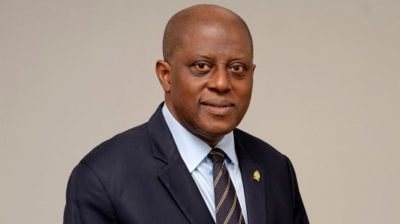Inside central bank’s high-stakes battle for stability

After years of unorthodox interventions and monetary policy experimentation, Nigeria is undergoing a seismic economic transformation, with its central bank at the helm of a bold, often painful recalibration. Since the appointment of Governor Olayemi Cardoso in September 2023, the Central Bank of Nigeria has embarked on one of the most aggressive overhauls in its history, marking a decisive shift from the expansive, development finance-driven strategies of the past toward orthodox monetary control.
This recalibration is unfolding against daunting inflation, steep currency depreciation, and structural weaknesses. Yet, despite short-term pain, proponents argue that these reforms may set the stage for long-term macroeconomic stability and renewed investor confidence in Africa’s largest economy.
For nearly a decade, under former governor Godwin Emefiele, the CBN pursued an activist and interventionist approach to monetary policy, frequently blurring the lines between fiscal and monetary mandates. But Cardoso’s ascension brought a pivot. “Monetary policy is necessary but not sufficient,” he stated in April 2024, signalling an era of tighter money, transparency, and data-driven decision-making.
This strategic shift became quickly apparent in early 2024 when the Monetary Policy Rate was hiked dramatically from 18.75 per cent to 24.75 per cent in just two months. The aim was to curb inflation, which had skyrocketed to a 30-year high of 33.69 per cent by April. In tandem, the Cash Reserve Ratio, essentially a liquidity chokehold, was raised to 45 per cent, one of the highest in the world.
“These decisions are not easy,” Cardoso admitted. “But they are necessary to restore confidence in the monetary system.”
At the core of Nigeria’s inflation crisis lies a trifecta of challenges: violent insecurity in the agricultural heartlands, the removal of costly fuel subsidies, and a volatile exchange rate.
Insecurity in the North-East and North-Central has crippled food production, pushing food inflation to 40.53 per cent. Simultaneously, while lauded by economists, the long-anticipated subsidy removal in May 2023 caused transportation costs to surge by up to 70 per cent, adding to inflationary pressures.
The most dramatic move, however, came with the unification of the country’s multiple exchange rate windows in June 2023. This long-overdue reform eliminated lucrative arbitrage opportunities, and the naira tumbled from N460 to the dollar in May 2023 to over N1,300 by April 2024, now sitting at N1,638/$ as of May 2025.
The CBN also ceased its dominant role as the main foreign exchange supplier, allowing market forces greater price-setting authority. While the initial liberalisation created volatility, analysts now note signs of stabilisation. The parallel market premium has narrowed, and foreign portfolio investors are gradually returning, lured by interest-bearing government securities.
Under Cardoso, the CBN’s communication strategy has become markedly more transparent. Quarterly Monetary Policy Committee meetings are now detailed, data-rich and followed by media briefings, an uncharacteristic level of clarity in a system long plagued by mixed signals and opacity.
Equally important has been the CBN’s improved coordination with fiscal authorities. High-level quarterly economic strategy meetings now attempt to align monetary tightening with fiscal reforms, especially efforts to reduce budget deficits and attract foreign capital.
Yet the bank acknowledges its limits. “Monetary policy alone cannot resolve inflation driven by structural issues,” Cardoso said, echoing concerns from economists like Professor Pat Utomi, who warned that interest rate hikes without corresponding security and infrastructure reforms risk treating the symptoms, not the disease.
In January 2024, the CBN introduced a sweeping recapitalisation directive for the banking sector. Tier 1 banks were ordered to raise their minimum capital to N500bn, while Tier 2 banks must reach N200bn. This is a buffer against shocks and a strategic move to elevate Nigerian banks to globally competitive standards.
The regulatory net has also widened over Nigeria’s booming fintech space. New Know Your Customer protocols, mandatory real-time monitoring, and cybersecurity compliance measures are now in force, part of the CBN’s strategy to preempt systemic risks in the digital financial ecosystem.
The early results of this overhaul are mixed. On the one hand, the reforms have begun restoring policy credibility and eliminating long-standing distortions. The clearance of the $7bn FX backlog has eased investor concerns. External reserves have stabilised around $33–34bn, providing about five months of import cover.
But the human and economic costs have been steep. Borrowing costs have surged. Prime lending rates are now around 28–30 per cent, with some exceeding 35 per cent. Credit to the private sector has tightened. The manufacturing sector, already under strain from currency depreciation, has contracted, reflected in a Purchasing Managers’ Index below 50.
GDP growth has slowed to 2.31 per cent in Q1 2024, down from 3.46 per cent in Q4 2023, well below the population growth rate of 2.5 per cent. This suggests shrinking per capita income and worsening poverty in a country where more than 60 per cent already live below the poverty line.
For all its boldness, the CBN’s playbook is not a silver bullet. The success of these policies will hinge on what comes next. Structural reforms must follow.
Improved agricultural productivity, better infrastructure, enhanced oil output, and fiscal discipline are non-negotiables if Nigeria hopes to avoid stagflation, a deadly mix of slow growth and high inflation.
International observers are cautiously optimistic. “Nigeria is doing the hard work now,” one senior economist at the IMF remarked. “But whether it pays off depends on consistency and political will.”
Next year will test Cardoso’s approach’s resilience. The CBN appears committed to walking the tightrope between restoring macroeconomic stability and avoiding a full-blown contraction.
“Nigeria’s path is not linear,” Cardoso said in a recent address. “But with discipline and coordinated action, the foundation we lay today can support a future of sustained, inclusive growth.”
Nigeria’s monetary tightening and exchange rate reforms represent one of the boldest policy resets in recent history. While the results have been painful in the short term, they may prove necessary for long-term economic stabilisation. The challenge now is to sustain the momentum, deepen structural reforms, and ensure that these macro-level shifts translate into meaningful improvements in the daily lives of Nigerians.
As the nation retools its economic architecture, the success of this transformation will not be judged solely by interest rates or exchange rate movements but by whether the average Nigerian feels a renewed sense of economic possibility.
Olaotan Fawehinmi writes from Lagos

